At this point, I’d wager even the average schmuck you’d pull off the street would have a general awareness of the unprecedented remastering schedule of SKYRIM. Lest we forget the fact that, technically, SKYRIM is available to play on the Amazon Alexa, it seems as if we may never truly be free of its vice-hold on fantasy RPGs. It’s something we’ve certainly referenced before, and has more than crossed the rubicon into a beleaguered fact of life. But while it may seem that they only come up with new consoles to jumpstart another port for Bethesda’s critical and cultural darling these day, there’s at least an undeniable justification and reasoning behind it: SKYRIM is widely considered (by this site and many, many, many others) one of the best and most influential games of the 2010s, entirely shifting the parameters of what fantasy gaming can look and play like on a technical, narrative, and world-building level. As such, while it may inspire an eye-roll or two, you can’t really fault the newer and newer generations of gamers for getting a chance to experience the juggernaut on their own preferred consoles and terms—even if that’s, er, pinball. But you know what game is not considered one of the best and most influential games of the 2010s? SAINTS ROW: THE THIRD.
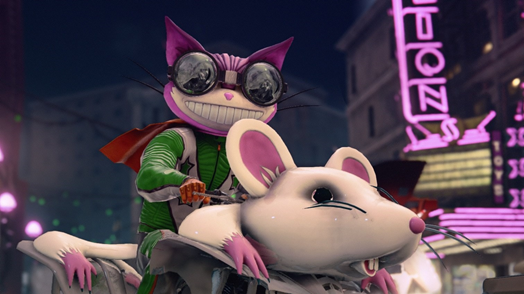
Dunno why!
Unleashed within four days of SKYRIM Back in November ‘11 (appropriately enough), SAINTS ROW: THE THIRD could most accurately be considered a moderate success at the time of its release, pushing five-and-a-half million units roughly a year after it entered the world (since the comparison’s already dominated the introduction, keep in mind that SKYRIM sold seven million copies in its first week). While critics at the time generally seemed to agree that it finally dodged the “GTA clone” dismissal that had (deservedly) plagued its first two installments, whether or not the tonal shift was fun-loving or excessive was less than unanimous. Effectively transposing the more straightforward rise-through-the-ranks gang narrative of its predecessors, SR3 is a smorgasbord of over-the-top blood ‘n guts, juvenile humor, and “satire” turned so far past 11 it wraps around to furthering the tropes it allegedly claims to skewer, all delivered with a candy-coated sheen so sweet it’ll rot your teeth. Gleefully irreverent and not shying away from its more questionable elements, SR3 is a steaming jalopy of everything-and-the-kitchen-sink mentality, a beautiful disaster that could have only been captured in the naive yesteryear of a decade ago.
Why SR3 is at least a subjective success is just how fully it commits to the bit. A philosophy I’m certainly no stranger too, if you’re going to make your game a giant middle finger to taste at large, you might as well go whole hog. Considering the fact that one could, if they wanted to, skydive from an airplane entirely nude while Kanye West’s “Power” plays as you light upon a penthouse and are tasked with killing everything that moves, all in the service of one of the game’s earliest missions, there’s really not much to say against the sandbox that SR3 loudly asserts itself as the king of. Any and all critiques in terms of its tone or style to be lobbied against it are sure to be one-upped and exacerbated one or two missions down the line, establishing it as a game best consumed with the mind emphatically unplugged. A mark in the favor of the game’s larger cultural role and relevance? Probably not, in the grand scheme of things, but I’m also not sure who’s turning to higher truths from a property where you can beat indiscriminate pedestrians to death with a giant purple dildo attached to a sword hilt. As such, things end up—well, “elevating” isn’t the right word, but you know—placing themselves in a self-constructed context that asks you to meet it on its own terms and proceed from there.
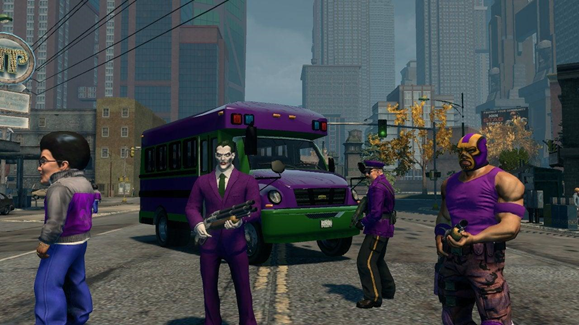
As pictured
Thankfully, proceeding from there can be a good bit of fun, albeit of the dumb-as-a-rock variety. A vein of SR3 naysayers claim the game is too easy. This is certainly not incorrect, as you’re pretty high-powered from the jump and can do ostensibly high-level DLC missions as soon as the intro is over (assuming you splurged on the complete package) without too much duress, but again, I think if SR3 was any more naturally challenging it would lessen some of the raw animal appeal of it. As polemical as this term may be, it truly is a bit of a power fantasy to know with some certainty that a gaggle of 20 goons with guns is no match for you and your barely souped-up pistol. The unique joy present in the moment as you’re a few cold ones in, leaning out the side of your car as one of your fellow Saints drives, absolutely laying waste to the armada of army-issue tanks pursuing you without a care in the world and with nary a hair mussed on your head is one uniquely beholden to the wanton chaos of SR3. Jettisoning yourself from the car before sending your vehicle to bowling-ball a flaming seven-car pileup; side missions built around seeing how much private property, cop cars, and rival gang members you can destroy in a set amount of time; careening like a missile through car windshields, booting the driver out and speeding away in a blaze of glory… this is the stuff dreams are made of.
All that said, the unique cherry on top of any returns SR3 has to offer is the fact that one foot is still kept firmly on the ground of Steelport. SAINTS ROW IV, while regarded in higher retroactive estimation than the absolute snoozefest of the first installment, is certainly a nadir as far as tone is concerned, a memetic shitpost that tasks the player with defending the United States from an alien invasion after becoming president, with superpowers suddenly injected into the world of story without a single look in the rearview mirror, ruining any and all elements of challenge that were already waning in its predecessor. While perhaps a “logical conclusion” of where the series was headed, the latent appeal of SR3 resides within its steadfast heightening of typical crime sandbox elements. Hanging out of helicopters and raining rocket launchers down on SWAT vehicles is unrealistic, but a high-octane update of your standard escort mission. Skydiving to lay waste to a penthouse, the fun resides in the flip of what would normally be a tower heist where you start at the ground floor and climb to the top on a ladder of bodies. Instead of a collection-based side mission, what you’re collecting is insurance fraud money as you ragdoll in front of various vehicles to rack up cash. It’s a hard tightrope to walk, and SR3 does occasionally misstep with a particularly egregious pun or mission premise, but it’s one that allows the game to stand apart from the other installments in the series.
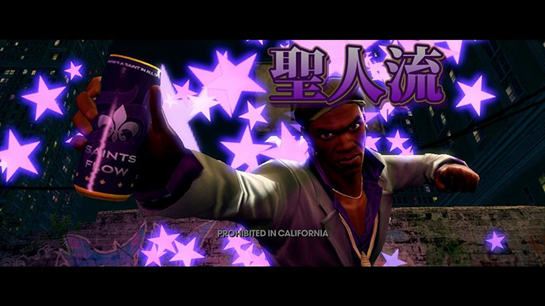
One foot firmly on the ground
It’s an interesting position to be in to assess the longer-term legacy of a game that, by all accounts and appearances, has no real illusions of grandeur. I can’t really call SR3 important, as it doesn’t move the medium forward with its themes, narrative, and gameplay (it’s tone is unique, but not necessarily transgressive). I can’t really call SR3 valuable, as especially with what’s happening outside your own very window at the current moment, the line of thinking that equates regular escapism to putting your head in the sand doesn’t seem too far off the mark. But I can and will call SR3 fun, and consistently so. The current wave of gaming has given us titles that have legitimized gaming as an artform in the eyes of the larger cultural consciousness, games that have redefined immersion, upped the ante of how we play together (APEX LEGENDS), and flipped the script on player experience at large. But aside from the regular cadre of Nintendo franchise stalwarts, there is a certain lack of bald-faced entertainment present in what we’ve seen as of late. If SR3 deserves to be remembered for anything, it’s as a vanguard snapshot of the salad days of the last gaming generation, released at a time when something meatheaded and with nothing going on upstairs was more readily embraced. SAINTS ROW: THE THIRD will always be a guilty pleasure of mine, but I don’t think there’s anything wrong with turning your brain off for a few hours at a time and watching a bunch of shit explode. If that’s the sum and total of its legacy, it’s a neutral good; there are worse things to be in 2020.








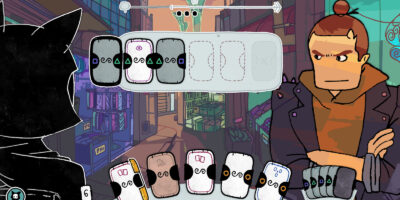



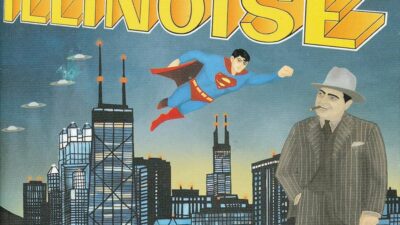



Comments